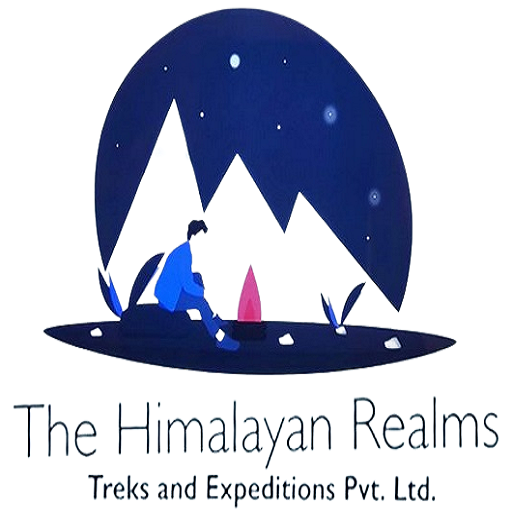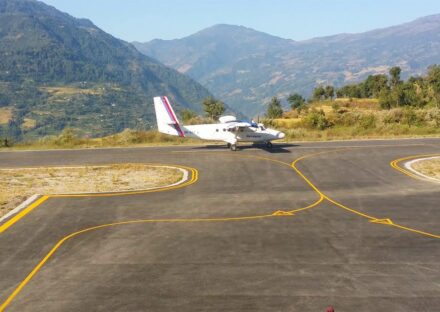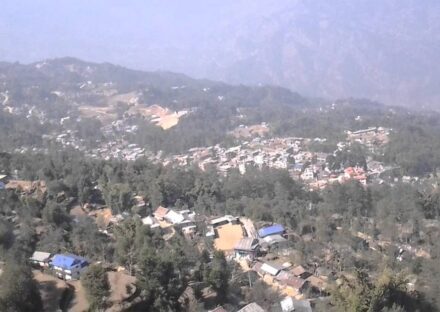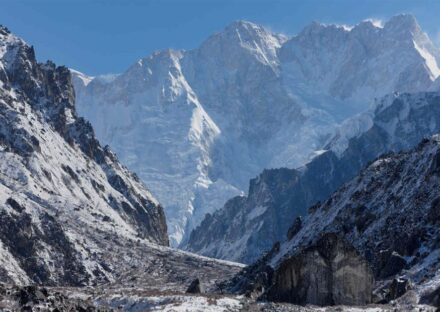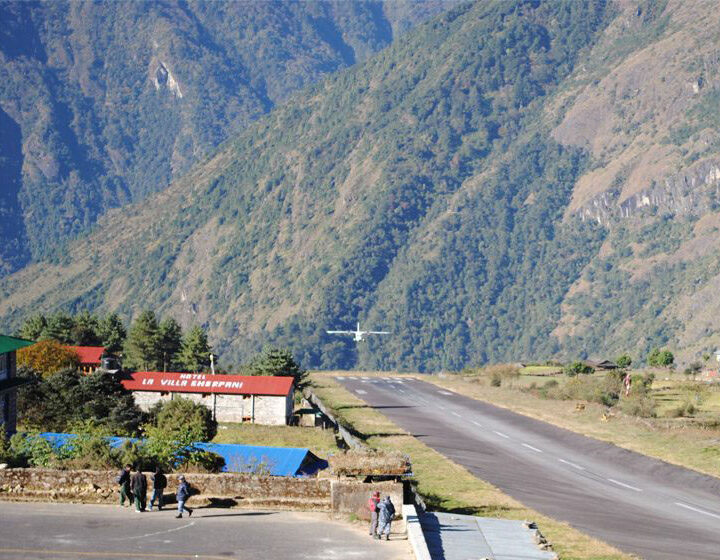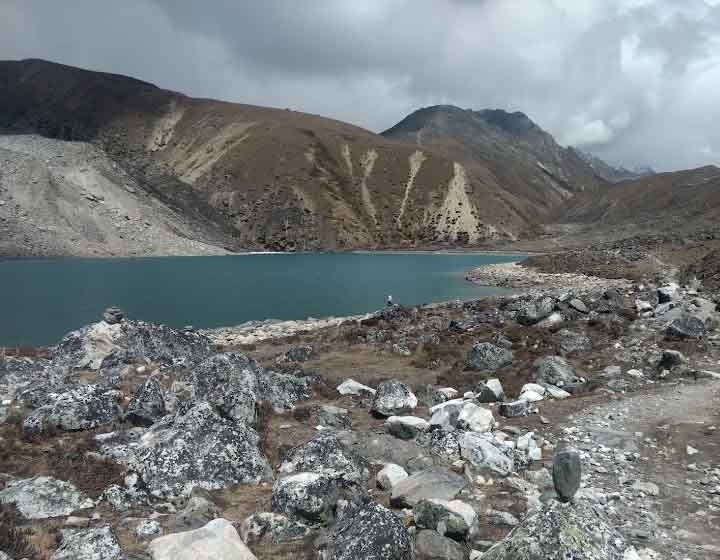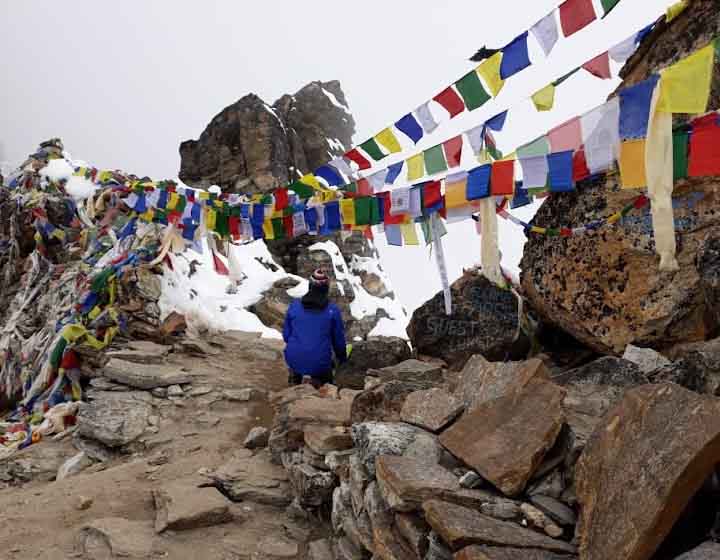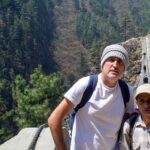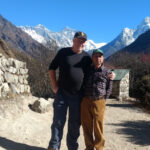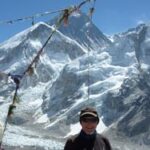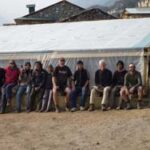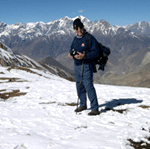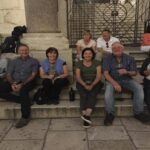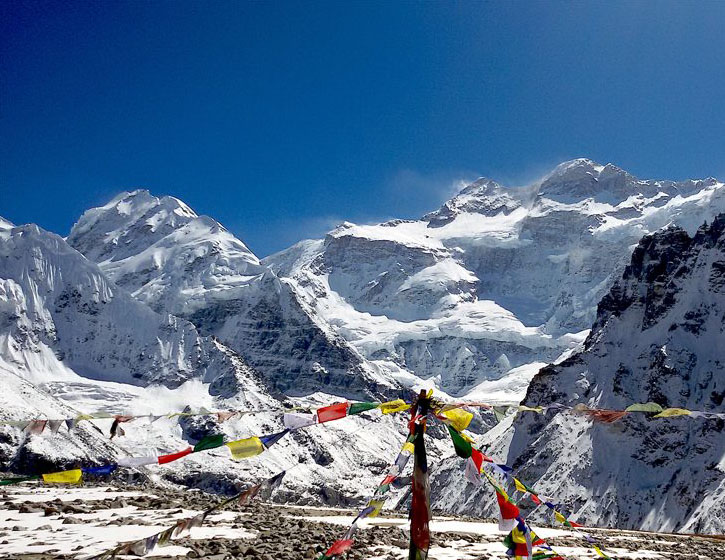
Trip overview

Overview Kanchanjunga 25 days trek
The Kanchenjunga trek is a spectacular and less crowded trekking experience in Nepal, offering breathtaking views of Mount Kanchenjunga (8,586m), the third-highest peak in the world. Located in the eastern Himalayas, the trek passes through remote villages, pristine forests, high alpine meadows, and dramatic landscapes.
The Kanchenjunga trek is a remote trekking area in Nepal. The Kanchanjunga trekking requires, most necessarily, a good level of fitness and some experience for trekking. Despite of the Kanchenjunga trek’s remoteness, the trekkers gain insight into peoples’ who are settled in that areas about their way of lifestyle and can visit the Ramtang and Oktang Monasteries On the way to Kanchenjunga. The Kanchanjunga trekking trails are the landscape and filled with rivers, waterfalls, green meadows, and many different kinds of flowers like rhododendrons, birches, and pine trees. There is another famous glacier, Yalung.
With regard to the mountains themselves, in addition to the main peak of Kanchenjunga, there are four subsidiary summits exceeding 8,000m, the most important being Kanchenjunga West, also known as Yalung Kang (8,505m). Also found in this area are approximately twenty peaks exceeding 7,000m, the highest being Kambachen (7,903m), Janu (7,710m), Jongsong (7,483m), Kabru (7,353m), Tent Peak (7,365m), and the Twins (7,350m).
This area was closed to trekkers until the mid-1980s. Today the region is protected by the Kanchenjunga Conservation Area, and a special trekking permit is required. With these restrictions, the beautiful and unique flora and fauna of this area are still in pristine condition today. This just adds to the fact that Kanchenjunga trekking is an unforgettable experience where trekkers get right into the heart of the remote, less-trekked Himalayan mountains and valleys.
People
The Kanchenjunga region is home to a mix of ethnic communities, including: Limbu and Rai in the lower areas. Sherpa, Tibetan, and Bhote in the higher altitudes, these communities are known for their warm hospitality, resilience, and deep-rooted traditions.
Lifestyle
Life here is simple, traditional, and closely tied to nature: Agriculture (millet, maize, barley, potatoes) and animal husbandry are the main livelihoods. In higher villages, yak herding is common. Houses are built using local stone, wood, and thatch or tin roofs.Traditional attire like the Limbu dress (mekhli and taga) and Sherpa robes (chuba) are often seen. Many still practice ancient oral storytelling, weaving, and cultural dances during festivals.
Religions
A harmonious blend of: Animism and Shamanism (especially among the Limbu and Rai) Buddhism (especially among Sherpa and Tibetan-descended groups), You’ll find: Gompas (Buddhist monasteries), Mani walls and chortens, Ritualistic stone cairns (used in animistic practices)
Animals (Fauna)
Kanchenjunga Conservation Area is a biodiversity hotspot. Wildlife you might see includes: Red Panda, Snow Leopard (rarely seen but present), Himalayan Black Bear, Musk Deer, Blue Sheep, Himalayan Tahr, Langurs and macaques in the lower forests, over 250 species of birds, including: Blood Pheasant, Satyr Tragopan and Himalayan Monal
Vegetation (Flora)
Varies dramatically with altitude: Subtropical forests (800–1,800m): Rhododendron, pine, oak, and fig trees, Temperate forests (1,800–3,000m): Fir, hemlock, and birch, Alpine shrubs and meadows (3,000–4,500m): Dwarf rhododendron, juniper, and high-altitude flowers, in spring, rhododendron blooms paint the hillsides in vibrant reds and pinks.
Atmosphere
Peaceful, spiritual, and untouched by mass tourism. The trail offers: Unspoiled mountain vistas of Kanchenjunga (8,586m), the third highest mountain in the world. Crisp mountain air Deep gorges and high mountain passes. Trekkers often describe the region as having a mystical and meditative feel, enhanced by the lack of crowds.
25-Day Kanchenjunga Trekking Highlights
Destination: Kanchenjunga North & South Base Camp
Duration: 25 Days
Region: Eastern Nepal (Taplejung District)
Max Elevation: Pangpema (5,143m) – Kanchenjunga North Base Camp
Trek Grade: Challenging
Best Time: March–May & September–November
Trip Highlights
Visit both the North and South Base Camps of the world’s 3rd highest mountain (8,586m) Remote and off-the-beaten-path trekking through pristine landscapes. Authentic cultural encounters with Limbu, Rai, Sherpa, and Tibetan Buddhist communities. Trek through diverse vegetation zones: from lush forests to high alpine landscapes. Spot Rare Himalayan wildlife in the Kanchenjunga Conservation Area (Red Panda, Snow Leopard, Himalayan Monal). Visit traditional monasteries, mani walls, and yak pastures. Fully supported camping/teahouse trek with expert guides and porters
Route Overview – Key Stops
- Kathmandu Arrival – Cultural briefing and permits
- Flight to Bhadrapur, drive to Taplejung – Eastern hills welcome
- Trek Begins – Mitlung, Chirwa, and Lelep: lush valleys, Limbu culture
- Gunsa Village (3,475m) – Gateway to the North Base Camp, rich in Tibetan culture
- Lhonak & Pangpema (5,143m) – Stunning views of Kanchenjunga’s North Face
- Backtrack to Gunsa, then cross Sele La Pass (4,290m) – Challenging but rewarding
- Tseram and Oktang (South Base Camp) – Close-up view of Kanchenjunga’s South Face, glaciers, and moraine
- Return via Tortong, Yamphudin, and Khebang – Diverse trails through forested ridges and hill villages
- Drive back to Bhadrapur and fly to Kathmandu
Scenic & Cultural Immersion
Interact with local families in remote villages untouched by modern tourism. Taste Traditional Eastern Nepali dishes and Tongba (millet beer). Witness rhododendron blooms in spring and crystal-clear skies in autumn. Ideal for photographers and nature lovers seeking raw Himalayan beauty
Trip Inclusions
Domestic flights & private transport. Trekking permits (Kanchenjunga Restricted Area Permit & Conservation Fee). Full-board trekking service with guide, porter & accommodation. First aid, emergency communication & insurance for the team
Included
- 2-night accommodation in Kathmandu with a B/B basis plan
- Flight fear from Kahtmandu to Bhadrapur for Guest and guide.
- Bus ticket from Bhadrapur to Terathum B
- All airport and hotel transfers
- National park permit
- Accommodation, food and tea/coffee during the trek
- All the camping equipment.
- Porter: – including salary, insurance, equipment.
- For guest:-Down jacket, Good sleeping bag (down jacket and sleeping bag are to be returned after trip completion).
- Chirwa to Bhadrapur bus fear
- Fly fear from Bhadrapur to Kathmandu
- All government and local taxes
Not Included
- Food in Kathmandu ( Lunch & Dinner)
- Nepal Visa fee
- International airfare from your country to Kathmandu and from Kathmandu
- Extra night accommodation in Kathmandu
- Travel and rescue insurance if guest get mountain sickness and need to rescue helicopter.
- Personal expenses example (phone calls, laundry service , bar bills, battery recharge, extra porters, bottle or boiled water, shower etc)
- Tips for guide and porters if you are happy with theirs services.
FAQs
-
Where is Kanchenjunga located?
Kanchenjunga is located in the far eastern region of Nepal, bordering the Indian state of Sikkim. It is the third highest mountain in the world at 8,586 meters (28,169 feet).
-
How difficult is the Kanchenjunga trek?
The Kanchenjunga trek is considered challenging due to its remote terrain, long duration, high altitude, and basic facilities along the route. Prior trekking experience and good physical fitness are highly recommended.
-
How long is the Kanchenjunga trek?
Our full trekking itinerary covers 25 days, including arrival and departure days, acclimatization, and buffer days for weather or health issues.
-
Is a special permit required?
Yes. Kanchenjunga is a restricted area, so you’ll need: Restricted Area Permit Kanchenjunga Conservation Area Permit (KCAP) You must trek with a registered trekking company and be accompanied by a licensed guide.
-
What kind of accommodation is available?
Accommodations are basic teahouses/lodges in villages, offering simple rooms with shared toilets. In some places, especially at higher altitudes, homestays or camping may be necessary.
-
How high is the highest point on the trek?
The trek reaches up to 5,143 meters (16,873 feet) at Pangpema (North Kanchenjunga Base Camp).
-
What kind of food is available on the trek?
You’ll get a mix of Nepali, Tibetan, and basic Western dishes (like pasta, rice, soup, and eggs). In remote areas, food variety is limited but nutritious.
-
How do we reach the trailhead?
The trek starts from Suketar or Taplejung, which is accessed by a domestic flight from Kathmandu to Bhadrapur, followed by a long jeep ride to the trailhead.
-
Can I charge my devices during the trek?
Electricity is available in some villages, but not guaranteed. Carrying a solar charger or power bank is recommended.
-
Is there mobile network or internet access?
Coverage is limited and inconsistent. Some villages may have mobile signals (mainly NCell or NTC), but internet access is rare or extremely slow.
